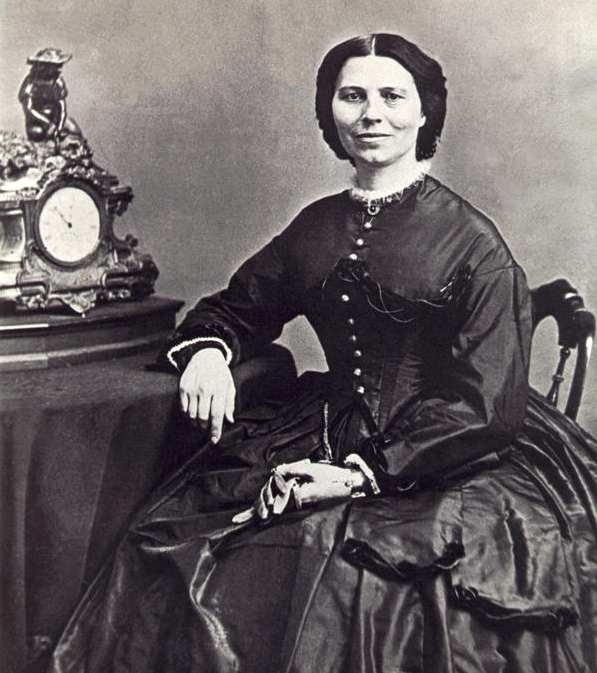The Power of Influence: Creating a Culture of Openness and Trust in Leadership
The Role of Influence in Effective Leadership
Leadership is a complex and multifaceted concept that involves a variety of skills and qualities. At the core of effective leadership, however, lies the ability to influence others. Influence is the power to affect the behavior, beliefs, or attitudes of others, and it is a critical component of successful leadership.
Influence can take many forms, ranging from formal authority to informal persuasion. Formal authority comes from a leader’s position within an organization, such as their job title or level of seniority. Informal influence, on the other hand, arises from a leader’s personal characteristics, such as their charisma, expertise, or reputation.
Regardless of the type of influence, the ability to influence others is a crucial skill for leaders. As Bruce Rhoades, a renowned leadership expert, suggests, “If others realize they can influence you, it will encourage openness, participation, and trust.” In other words, leaders who are open to being influenced by others can create a culture of openness, participation, and trust within their teams.
In this article, we will explore the concept of influence in leadership, the importance of being influenced as a leader, and how leaders can overcome the fear of losing control. We will also provide tips on how leaders can encourage openness, participation, and trust among their team members and discuss the role of communication in influencing and being influenced. By the end of this article, readers will have a deeper understanding of the power of influence in leadership and how it can be used to create a positive and productive workplace culture.
Understanding Influence in Leadership
Influence is a crucial component of effective leadership. It is the ability to persuade and affect the behavior, beliefs, and attitudes of others. As a leader, your influence can come from formal authority, such as your position in the organizational hierarchy, or informal persuasion, such as your personal characteristics.
Formal authority is often the most obvious and direct form of influence. It is derived from the power that comes with a particular position, such as a CEO or manager. Leaders with formal authority have the power to make decisions and enforce rules, and their decisions are often perceived as being final.
However, informal influence can be just as powerful, if not more so, than formal authority. Informal influence arises from a leader’s personal characteristics, such as their charisma, expertise, or reputation. Leaders with strong interpersonal skills, the ability to communicate effectively, and a deep understanding of their team members can often influence their team members without relying on formal authority.
Positive influence can have a significant impact on team performance and workplace culture. It can inspire team members to be more engaged, motivated, and productive. It can also foster a sense of trust and respect between team members and their leader.
However, influence can also have negative consequences if used improperly. Leaders who use their influence to manipulate or coerce their team members can erode trust and create a toxic work environment.
Therefore, understanding the different types of influence and how to use them effectively is critical for leaders. By harnessing the power of influence, leaders can inspire their team members to achieve their goals, build strong relationships, and create a positive workplace culture.
The Importance of Being Influenced as a Leader
As a leader, it can be easy to fall into the trap of thinking that you have all the answers and that your job is to direct and control your team. However, this approach can be limiting and can prevent you from realizing the full potential of your team members.
Being open to being influenced by others is a critical component of effective leadership. When leaders are open to being influenced, they create an environment where team members feel empowered to share their ideas, thoughts, and concerns. This, in turn, can lead to increased participation, collaboration, and innovation.
Leaders who are open to being influenced also create a culture of trust and respect within their teams. When team members feel that their opinions are valued and that their input is being considered, they are more likely to trust their leader and to work together effectively to achieve their goals.
There are several benefits to being influenced as a leader. Firstly, being open to being influenced can help leaders gain a deeper understanding of their team members’ perspectives and experiences. This can help them make more informed decisions and create solutions that are tailored to the needs of their team.
Secondly, being open to being influenced can help leaders build stronger relationships with their team members. By demonstrating a willingness to listen and learn from others, leaders can create a culture of mutual respect and trust.
Finally, being open to being influenced can help leaders foster a sense of ownership and engagement among their team members. When team members feel that their ideas and input are valued, they are more likely to take ownership of their work and to feel invested in the success of the team.
Being open to being influenced is a critical component of effective leadership. Leaders who are willing to listen, learn, and be influenced by their team members can create a culture of openness, participation, and trust. This, in turn, can lead to increased engagement, collaboration, and innovation, and can help teams achieve their goals more effectively.
Overcoming the Fear of Losing Control
While being open to being influenced is critical for effective leadership, it can be challenging for some leaders to relinquish control and allow their team members to have a say in decision-making. This fear of losing control can stem from several sources, including a lack of trust in team members’ abilities, a desire to maintain power and authority, or a fear of being perceived as weak or indecisive.
However, leaders who are unwilling to be influenced can create a toxic work environment and inhibit their team’s ability to perform at its best. By maintaining rigid control and not allowing team members to contribute their ideas, leaders can stifle innovation and creativity and create a culture of fear and mistrust.
To overcome the fear of losing control, leaders must first recognize the negative impact that their behavior is having on their team. They must acknowledge that their team members have valuable insights and perspectives that can contribute to the team’s success.
Leaders can then take several steps to become more open to being influenced. First, they can actively seek out feedback from their team members and encourage them to share their ideas and opinions. This can be done through regular team meetings, one-on-one conversations, or anonymous feedback surveys.
Second, leaders can work to build trust and rapport with their team members. This can be achieved through active listening, empathy, and a willingness to admit mistakes and take responsibility for their actions.
Third, leaders can delegate decision-making authority to their team members and provide them with the resources and support they need to succeed. This can help team members feel more invested in their work and can foster a sense of ownership and accountability.
Finally, leaders can work to shift their mindset from one of control to one of collaboration. By viewing themselves as part of the team rather than above it, leaders can create a culture of mutual respect and cooperation that benefits everyone.
Overcoming the fear of losing control is essential for effective leadership. Leaders who are open to being influenced by their team members can create a positive and productive work environment that fosters trust, collaboration, and innovation. By actively seeking out feedback, building trust, delegating decision-making authority, and shifting their mindset, leaders can become more open to being influenced and create a culture of openness and participation within their teams.
Encouraging Openness, Participation, and Trust
Leaders who are open to being influenced can create a culture of openness, participation, and trust within their teams. However, creating such a culture requires intentional effort and a willingness to invest time and resources into building strong relationships with team members.
To encourage openness, participation, and trust, leaders can take several steps:
Foster a Culture of Open Communication
Open communication is essential for creating a culture of openness and participation. Leaders should encourage their team members to share their thoughts, ideas, and concerns openly and honestly. Leaders can achieve this by creating a safe space for team members to speak up, actively listening to their ideas and concerns, and responding to them in a respectful and constructive manner.
Lead by Example
Leaders who model openness, participation, and trust can inspire their team members to do the same. Leaders should lead by example by sharing their own thoughts and ideas, being receptive to feedback, and creating opportunities for team members to participate in decision-making.
Create Opportunities for Participation
Leaders should create opportunities for team members to participate in decision-making and problem-solving. This can be achieved through brainstorming sessions, group discussions, and team-building exercises. Leaders should also delegate tasks and responsibilities to team members, providing them with the autonomy and support they need to succeed.
Build Trust
Trust is the foundation of a successful team. Leaders should work to build trust with their team members by being reliable, transparent, and consistent. Leaders should also hold themselves and their team members accountable for their actions and decisions.
Celebrate Successes
Leaders should celebrate successes and recognize team members’ contributions. Celebrating successes can help build morale, increase motivation, and foster a sense of pride and ownership among team members.
Creating a culture of openness, participation, and trust requires intentional effort and a willingness to invest time and resources into building strong relationships with team members. Leaders who are open to being influenced can create such a culture by fostering open communication, leading by example, creating opportunities for participation, building trust, and celebrating successes. By doing so, leaders can create a positive and productive work environment that inspires team members to achieve their goals and reach their full potential.
The Role of Communication in Influencing and Being Influenced
Effective communication is crucial for both influencing and being influenced as a leader. Leaders who can communicate clearly and effectively can persuade and inspire their team members, while leaders who are open to being influenced must be able to listen actively and communicate their openness effectively.
To influence others through communication, leaders must first understand their audience. They must be able to communicate in a way that resonates with their team members’ values, priorities, and concerns. Leaders should also be able to articulate their vision and goals clearly and concisely, using stories and examples to illustrate their points.
To be influenced through communication, leaders must actively listen to their team members and be open to their ideas and perspectives. They must be able to communicate their openness effectively, using verbal and nonverbal cues to signal their willingness to listen and learn.
Active listening is a critical component of effective communication. Leaders should listen attentively to their team members, asking questions and clarifying their understanding as needed. They should also demonstrate empathy and respect for their team members’ perspectives, even if they don’t agree with them.
Effective communication also requires clarity and transparency. Leaders should be honest and straightforward in their communication, avoiding jargon and corporate-speak. They should also be willing to admit when they don’t know something and seek input and advice from their team members.
Finally, effective communication requires ongoing feedback and evaluation. Leaders should seek feedback from their team members on their communication style and adjust their approach as needed. They should also evaluate the effectiveness of their communication in achieving their goals and adjust their strategy accordingly.
Effective communication is crucial for both influencing and being influenced as a leader. To influence others, leaders must be able to communicate clearly and effectively, while being open to being influenced requires active listening, empathy, and a willingness to seek feedback and adjust their approach as needed. By mastering the art of communication, leaders can create a culture of openness, participation, and trust that inspires their team members to achieve their goals and reach their full potential.
Striking a Balance: The Importance of Being Influenced as a Leader
Influence is a critical component of effective leadership. Leaders who can influence their team members positively can create a culture of openness, participation, and trust that inspires team members to achieve their goals and reach their full potential. However, being open to being influenced is equally important for leaders. By being receptive to feedback and input from their team members, leaders can create a more inclusive and collaborative work environment.
Overcoming the fear of losing control is essential for leaders who want to create a culture of openness, participation, and trust. Leaders must be willing to relinquish some of their authority and delegate decision-making to their team members. They must also be willing to listen to their team members’ ideas and feedback and adjust their approach as needed.
Creating a culture of openness, participation, and trust requires intentional effort and a willingness to invest time and resources into building strong relationships with team members. Leaders can achieve this by fostering open communication, leading by example, creating opportunities for participation, building trust, and celebrating successes.
Effective communication is crucial for both influencing and being influenced as a leader. Leaders who can communicate clearly and effectively can persuade and inspire their team members, while leaders who are open to being influenced must be able to listen actively and communicate their openness effectively.
In conclusion, being open to being influenced as a leader can have a significant impact on team performance and workplace culture. By recognizing the value of their team members’ input and feedback, leaders can create a culture of openness, participation, and trust that inspires team members to achieve their goals and reach their full potential. Effective leadership requires a balance of influence and receptiveness, and leaders who can strike this balance can create a positive and productive work environment that benefits everyone.






